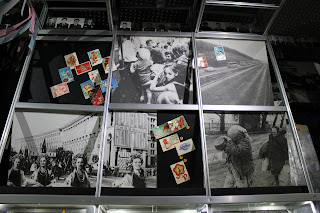I had a chance to visit Ukraine for three days last month for another project I am working on at the moment. After my official visit at the Ukrainian Evangelical Seminary, I spent the second half of my time covering about 500 KM of road travel (map) on a whirlwind tour between three places related to the Chernobyl nuclear disaster in 1986. My purpose was to see what lessons I might be able to pass to Fukushima and it was indeed a very fruitful trip and worth being on the dirt road for 10 hours or so.
The three places I visited are:
First, the Ukrainian National Chernobyl Museum in Kiev, the capital city of Ukraine.
Second, Ozadivka village in Berdychiv District, about 200 KM southwest of Kiev. This is one of the areas where the former Soviet government relocated residents within the 30 KM zone from the Chernobyl nuclear plant.
Third, Tuzhar village in Chernobyl region, 100 KM northeast of Kiev and close to the 30 KM zone from the Chernobyl nuclear plant.
I am only writing this nearly a month after my visit as my preparation for my third visit to Fukushima in a week. Fukshima disappeared from the international media for a while and now it started to surface again. Why? I will gradually write about this as the dates come closer for me to be in that Land of Good News again!
This week, I will focus on remembering Chernobyl and I will start with the Chernobyl Museum. An interesting fact to note is this - it was built last year and largely by donation from Japan. Why? The last nuclear crisis of this scale the world had experienced before Chernobyl was Hiroshima and Nagasaki. People of Japan offered significant assistance. It was built last year, a year before 25th anniversary of the Chernobyl disaster. Who could have imagined that people would come to this place again, but now to seek a voice of wisdom and experience from the shared experience of deep suffering and pain?
Remembering. Truth matters.
Just like Holocaust and other tragic events in history, the most important thing is to remember what happened. I took a few photos and recorded a few video clip in the museum.
This is what happened on the early morning of April 26, 1986. (A film made with a replica of the plant)
The government did not disclose the accident immediately and started evacuating people a few days later without giving them full information. May Day Parade took place 4 days after the explosion and even in high risks of radiation poisoning. Foreign media started to cover the issue.


No comments:
Post a Comment